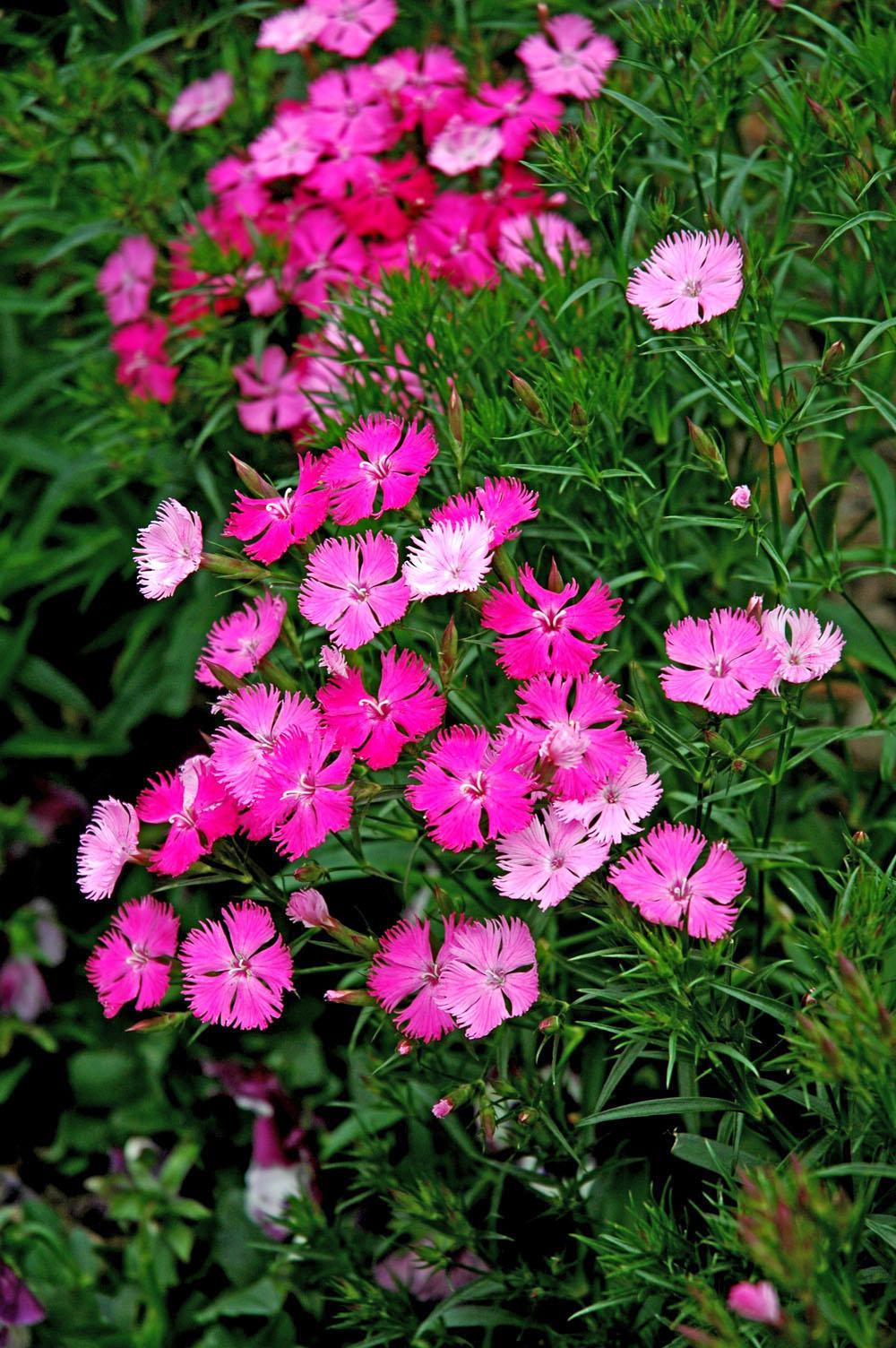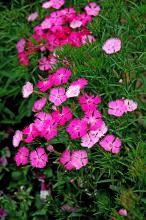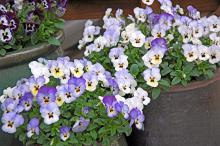Information Possibly Outdated
The information presented on this page was originally released on September 21, 2006. It may not be outdated, but please search our site for more current information. If you plan to quote or reference this information in a publication, please check with the Extension specialist or author before proceeding.
Cool-season favorites now have siblings
By Norman Winter
MSU Horticulturist
Central Mississippi Research & Extension Center
It took some time, but two of my favorite cool-season plants just got siblings: Frosty Rain pansy and Bouquet Rose Magic dianthus.
For years, everyone has adored Purple Rain pansy, the only mounding, cascading selection. Popular demand usually makes it hard for procrastinators to find them, yet for years this has been a series of one.
Pan American is offering Frosty Rain as another option in what is now the Rain series. Depending on the temperature, Frosty Rain can have different looks throughout the season. It is white with light blue/purple picotee edge and purple blotch; the blotch can occasionally appear blue-purple.
In cooler conditions, flowers have more of an ocean color pattern with purple picotee; warmer conditions result in more white with ocean/purple picotee. Both the Purple Rain and Frosty Rain will have flowers that are about twice the size of hybrid-type violas.
As with almost any other flower, the key to success lies in bed preparation. Pansies do not perform well in tight, heavy soil. Amending the planting area is one of the best ways to have success over these conditions.
Add organic matter such as fine pine bark (pieces less than one-half inch), leaf mold, compost, peat and sand. Incorporate a 3- to 4-inch layer of organic matter with the native soil to build up the bed and provide excellent drainage.
This same organic matter will benefit gardens with an excessively sandy soil structure. Sandy soils dry quickly and allow for rapid leaching of nutrients. The organic matter will increase the soil's water-holding capacity greatly and will help hold in valuable nutrients.
In 2001, Bouquet Purple dianthus was chosen as a Mississippi Medallion award winner. For all of these years, it too has been an only child, but now there is Bouquet Rose Magic. The blooms open white and mature to light pink, then a deep rose color. This means on one flower stalk, you will see all of these colors at once. Bouquet Rose Magic shows the most color variation in high light and cool temperatures in the landscape.
The Bouquet series is considered an interspecific hybrid. For a while it performs like the Telstar series, a Louisiana Select winner, but shortly you will see the big difference. The Bouquet series is a tall dianthus that is a good landscape performer with potential for cut-flower growers.
The stalks reach 18 to 24 inches in height and produce an abundance of bouquets, ready for cutting. The flowers are bright and bold.
The Bouquet series has remarkable cold tolerance, as proven by the Bouquet Purple also being designated as a Minnesota Select Perennial Plant winner.
How long will the Bouquet series persist in your garden? That answer varies from garden to garden, as is typical with many plants. One thing is definite: Bouquet Purple would be a good value even if you purchased it annually like a pansy.
Bouquet dianthus prefers well-drained, well-worked beds that are rich in organic matter. When preparing a bed, incorporate 2 pounds of a slow-release, 12-6-6 fertilizer with minor nutrients per 100 square feet of bed space. They need plenty of sun to bloom to their potential. Lightly side-dress with fertilizer once a month to keep them growing and producing.
There are two important steps to achieving happiness with the series. The first is to mulch to conserve moisture, deter weed growth and keep summer soil temperatures cooler. The other is to deadhead to keep the plant looking tidy and the flower stems coming. For cut flowers, cut the stems when three flowers are fully open.
So now we have the Bouquet series of dianthus and the Rain series of pansies. Whatever kind of soil you have to work with, there is plenty of time to get the beds prepared properly before planting.




